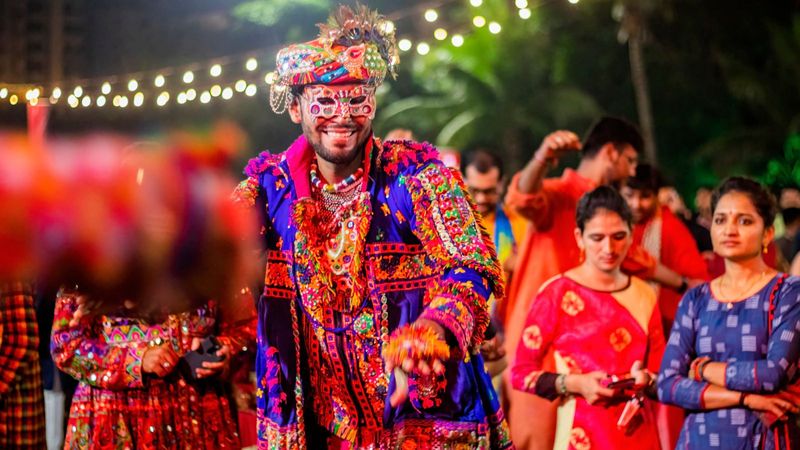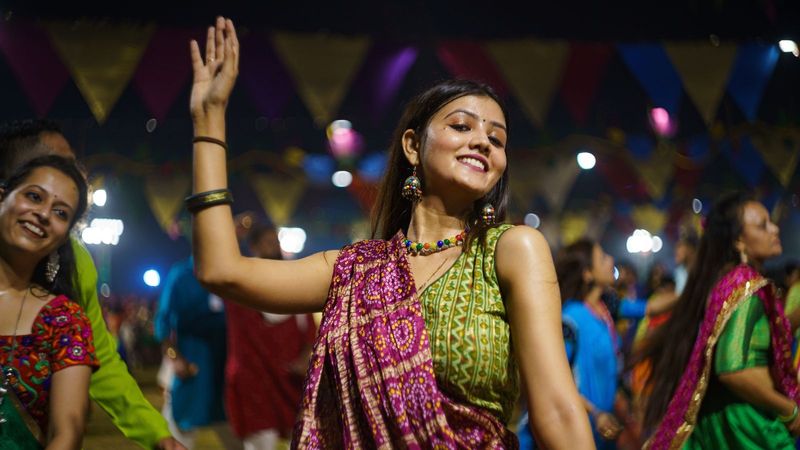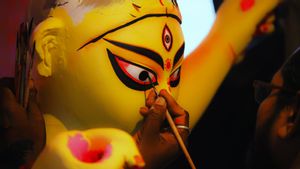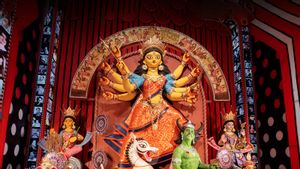It's that time of the year again when there are wholesome Indian festivals and festivities to look forward to every month. Navratri (also known as Sharad Navratri) is among the most awaited festivals, as there is a lot to celebrate and look forward to over the 9 Navratri days all over India, especially in the northern part of the country. The Navratri celebrations have as many forms as Shakti (also known as Durga or Devi), which is the goddess who is worshipped during this festival.
Navratri means nine nights, where Goddess Shakti's incarnations/forms are acknowledged and worshipped. Here's a compilation of the most common traditions if you're wondering how to celebrate Navratri, with other tips like the best delicacies that you can prepare as a part of the Navratri celebration and the much loved and fun dance form, Garba.
Goddess forms worshipped during Navratri

Navratri, as the name suggests, is celebrated for 9 days, with each of these days being dedicated to one of the forms of Goddess Durga. How does she have 9 forms you ask? According to the tales from Hindu Mythology, these 9 forms are essentially the 9 stages that the goddess took in her war with Mahishasura. On the 10th day, when she won, Vijayadashmi was celebrated.
As a goddess, Durga is associated with strength and protection, and if it really gets to that point, then sheer destruction. Navdurga or the nine forms of Durga are also said to represent the different stages in a woman’s life. Nurturing, and yet brutal when required to be, Navratri is a festival that celebrates the balance women, and as a representative, Durga brings to life.
- Shailaputri: Incarnated as the daughter of the mountains, Shailaputri is the first form of Durga to be worshipped in Navratri. She is one of the most powerful forms of the Goddess who rides a bull and acts as a counsellor to many other Gods in times of need. She is also known as Parvati in many mythologies. The role that the goddess signifies here is that of the daughter. She is free, in thought, and in her choices.
- Brahmacharini: This form of the Goddess worshipped in Navratri signifies sacrifice, resolution, and the modern world's hustle. Brahmacharini literally means the female who follows the path of Brahma (the ultimate truth). It is believed that Narad muni predicted that to get Lord Shiva to be her husband, the goddess would have to perform penance, and this form, usually worshipped on day two, is the one that did.
- Chandraghanta: A contemporary image of the better half of Shiva, she is the female form of calmness, positivity, and beauty. This form of the goddess adorns her head with a crescent moon, cue the name, and is believed to be the destroyer of sins, sufferings, and mental hurdles of her devotees.
- Kushmunda: She is believed to be the unsaid, silent creator of the matter and energy in the universe. Worshipped on the 4th day, she is the form of goddess Durga who is also called ‘Adi Shakti’. Adi in Sanskrit means the start, further signifying the role the goddess plays in the creation of the universe.
- Skanda Mata: She is also the deity of many households, apart from forming a part of the Navratri celebration. She is the mother of Skanda/Kartikeya and is often linked to fertility and the powerful motherly instinct. Worshipped on the fifth day of Navratri, this form of the goddess is the one that is most associated with her visually. The image of Durga, where the goddess is perched on a lion, and has four arms, is the form of Skanda Mata.
- Katyayani: Also known as Mahishasurmardini (the slayer of Mahishasura), she is the bold, courageous form of Devi. She’s also the daughter of the wise sage Katyaayna who performed penance of goddess Durga and had asked her to be born as his daughter. She is worshipped on the sixth day of Navratri.
- Kaalratri: The one who is as dark and fearless as the night, she is also called Kaali. She is the fiercest form of the Goddess. This form of the goddess, which is worshipped on the 7th day, is depicted to be of dark colour, with long wavy hair, and a garland made of human skulls. Her ride is the animal donkey, which while a hardworking one, is often overlooked.
- Maha Gauri: The name is an adornment to her glowing (not fair) complexion and her intelligence. This eighth day of Navratri is also known as Durgashtami. Radiating peace and compassion, this form of the goddess is said to be the one that purifies her devotees by destroying her sins.
- Siddhidatri: She is the personification of the siddhis (the ultimate abilities), presented by Maa Kushmanda to Shiva after he prayed for and demanded perfection for himself. Worshipped on the ninth day of Navratri, this form of the goddess is the one that is the provider of knowledge, and as the legend goes, Lord Shiva got all the siddhis in her form after praying to Maha Shakti.
How is Navratri celebrated?

The Navratri festival generally falls in the month of October each year, and the dates for Navratri 2024 happen to be 3rd to 12th October. In the Panchang calender, the Navratri festival falls in the month of Sharad, which is the beginning of the winter season. Both Chaitra Navratri, and Sharad Navratri fall around equinoxes, with the former being in the late spring season, and the latter in autumn.
Sharad Navratri is celebrated with new clothes being bought, homes being lit up in fervour, and of course, with Navratri dandiya nights. In a Navratri dandiya night, people lose themselves in the garba music, and dance their hearts out. These garba nights are organised the country over, and with a large NRI population, garba nights in other countries are also a common sight. The best are however experienced in Maharashtra and Gujarat.

In West Bengal, and other eastern parts of the country, garba makes way for Durga Pujo pandals. As it happens each year, for Navratri 2024 as well, elaborate pujo pandals all over the country have been set up. Devotees go pandal hopping with friends and family, and enjoy the many little treats at the pandal. Even if you aren’t in Kolkata, where the pandals are grand, and very thoughtfully designed, you can still find stunning pujo pandals in your city, all decked up for Navratri 2024. In metros like Mumbai, Delhi, and Bangalore, there are plenty, and while in cities like Pune, you might not find as many, but the ones you will, are going to make your Naratri 2024 so much better.
Apart from these community celebrations, in a large part of North India, young girls are worshipped on the seventh and eighth days of Navratri. This practice is called Kanya Poojan or in more vernacular terms, Kanjak. Some devotees have Navratri fasts for all the days, and with Kanya Poojan, they break their fasts. Aged three to ten, these young girls are invited by the devotees to their houses, who after puja, offer them chane-puri-halwa, and sometimes small gifts too. These young girls, who are worshipped at Kanya Poojan, are believed to be the forms of the goddess Durga herself.
Colours for Navratri 2024

Devotees celebrate different days of Navratri with different colours each year. While the palette more or less remains the same as each colour represents a different form of goddess Durga, the sequence keeps changing for each year. For Navratri 2024, here are the colours:
- Navratri day 1: Yellow
- Navratri day 2: Green
- Navratri day 3: Grey
- Navratri day 4: Orange
- Navratri day 5: White
- Navratri day 6: Red
- Navratri day 7: Royal blue
- Navratri day 8: Pink
- Navratri day 9: Purple




